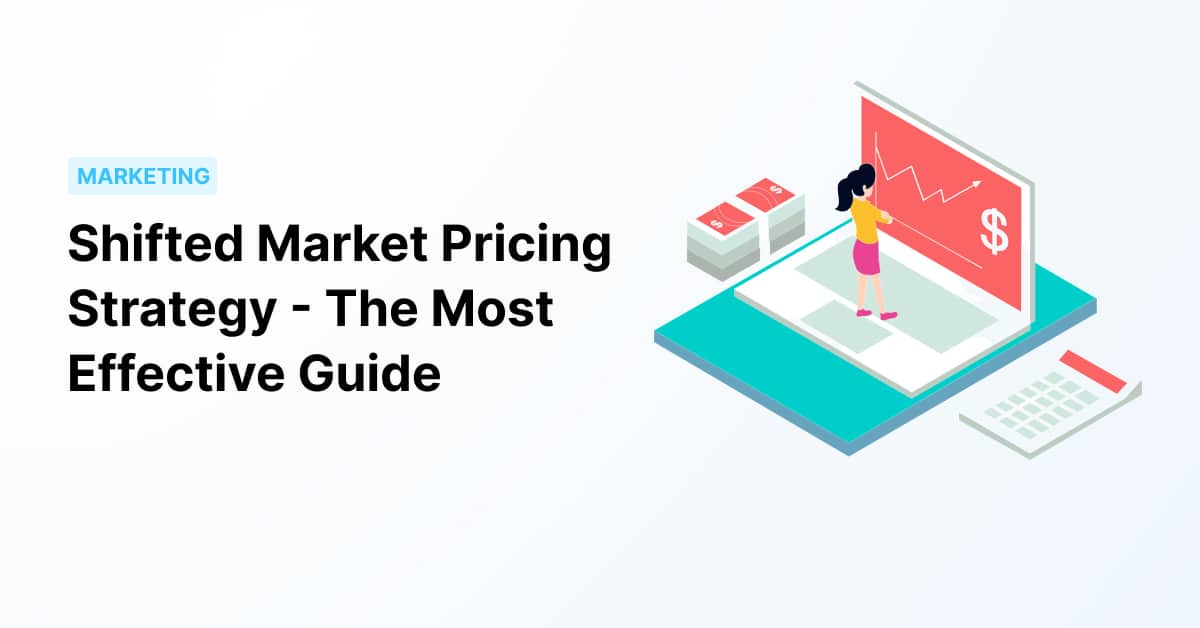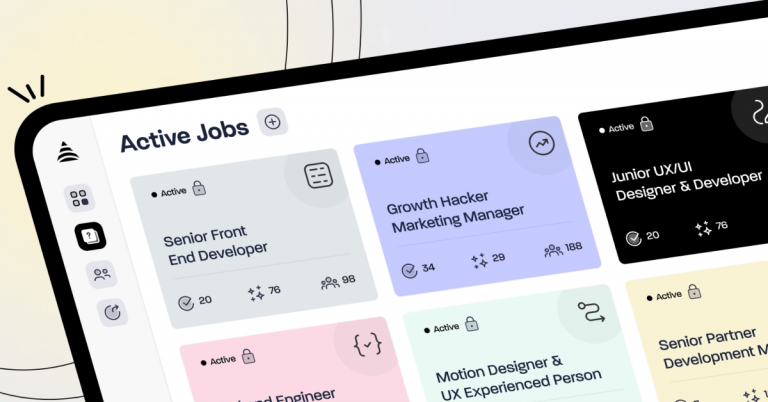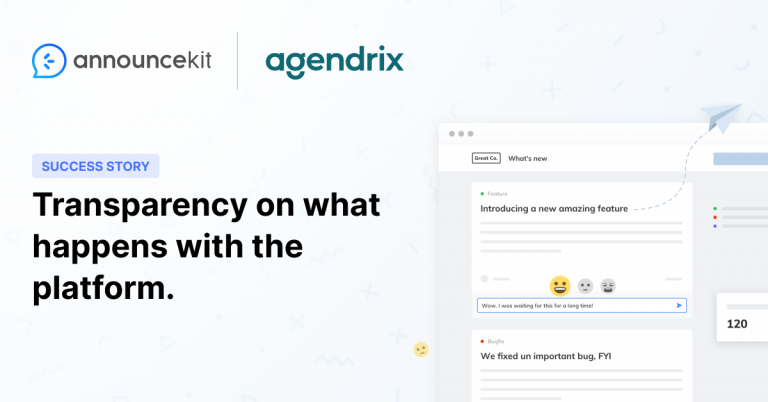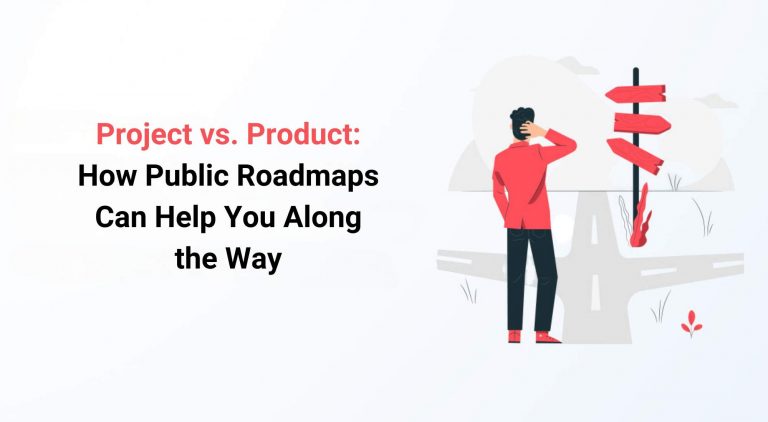The pricing strategy for a SaaS product means the same as air and water for the continuity of human life. Yes, pricing is vital to your product’s future and vertical growth. So why don’t we use the “shifted market pricing strategy“? Assuming you are asking what this strategy is, I will continue to write!
When updating the prices of SaaS products, you need to consider many different strategies and parameters. If you use the wrong strategy, you can hurt your sales and lose customers.
In spite of that, you can get the momentum you’ve been looking for by coming up with a plan that works for your product and the market you’re in.
Some of your competitors may charge lower service fees than yours, and some of your competitors may charge you higher service fees. Are you unsure about how to set your own prices? I strongly recommend the shifted market pricing strategy. Thanks to this strategy, we will determine our own pricing policy by looking at the prices of our competitors.
In a way, our competitors are going to decide for us. 🧐
In this post, we’ll talk about what the shifted market pricing strategy is. Also, I will explain how you can successfully use this for your SaaS pricing changes.
What is shifted market pricing strategy?
It raises some concerns for SaaS products when it comes to price increases, for example, about whether users will like the new pricing policy. But if your company’s costs are going up in different ways, you need to change your prices to keep your income and expenses in balance.
You should make changes when the prices of competing products in your market begin to fluctuate. As a result of this change, a new price equilibrium forms in the market you are in.
Shifted market pricing strategy is a term that describes the process of raising prices when there is a change in the market. The most common reason to do this is when there is a shift in demand or supply. In short, it is the time when the price of goods and services changes.
The best example of this is when a company decides to raise its prices due to inflation. The inflation we experienced in 2022 and the recession expected to occur in 2023 is the fit example for this.
What are the pros and cons of using a shifted market pricing strategy?

Pros of using a shifting pricing strategy:
- Higher price, higher profit rates: You can increase your profit every time you sell by raising your prices. We will talk about the negative result later! 🙂
- Low prices can increase demand: If you set your pricing policy lower than alternative products, the demand for your SaaS product may increase.
- If you have a different pricing policy than the average of your competitors, you can differentiate your product from the market.
Cons of using a shifted market pricing strategy:
- You may lose customers: If your product charges higher than the market price, your customers may choose your cheaper competitors.
- Risk of damaging reputation: Charging significantly lower prices than the market price could lead to a perception that a company’s products or services are of lower quality, which could damage its reputation.
What are the 3 major approaches to pricing strategy?

- Cost-based pricing: This is one of the simplest strategies ever. It is also known as cost-plus pricing. A company simply sets its price based on what it costs to manufacture or purchase its goods or services. This approach works well in a stable economy where prices don’t fluctuate much and there are no competitors charging lower prices.
- Competition-based pricing: This approach focuses on what customers will pay in the market rather than what it costs to produce an item. Competition-based pricing is particularly useful in situations where customers are less price-sensitive.
- Value-based pricing: This is the most effective approach to pricing strategy because it takes factors other than just cost into account when setting prices. Consumers perceive it as worth paying higher prices for superior-quality products or services. Therefore, companies can charge higher prices than their competitors without losing customers.
You may be wondering why I am describing these approaches. If you think the shifted market pricing strategy is not suitable for you, you can develop a new strategy based on these approaches.
Understanding the market

Before developing a pricing strategy, you need to understand the market you are in. You may need to analyze the industry from different perspectives, such as industry size, the estimated total number of users, and whether the industry will grow or die.
This means figuring out if any changes have happened and figuring out how they affect prices.
If you observe an increase in demand by users for the service you provide, you can increase your prices. This won’t be a problem as long as the user responds to your product or service.
However, if there is a decrease in demand, you may need to lower your prices. Because you need to do this to stay competitive and continue to generate income.
For example, the fast grocery delivery market has been very popular in recent years. It is valued at US$38.5 billion in 2022 and is expected to reach US$81.5 billion by 2032. Do you know what this means? New players are entering the game in these two markets. Former players are either offering big discounts or revising their prices to stay competitive by using a skimming pricing strategy.
In summary, in order to be competitive, you must be able to review and change your prices according to market balances. We call this flexibility the “dynamic pricing strategy.”
Developing a shifted market pricing strategy

By analyzing the market, we gained knowledge and learned the expectations of the market from us. We are now ready to develop a “shifted market pricing strategy.” This involves identifying your target audience and competitors, setting pricing goals, and determining the best pricing strategies and tactics to achieve those goals.
Consider demographic features and user needs when determining your target audience. In this way, you will develop your strategy in accordance with them.
The second step will be to examine how your competitors are pricing their products and services. You can find a suitable position for yourself by examining the prices of your competitors. For example, if your product is an immature SaaS product, it would not be attractive to charge as much as or more than an advanced competitor’s SaaS product.
Now that we understand our target audience and market competition, what’s next? We will set goals. Some of these might be to bring in more money, maintain a certain profit margin, or simply stay competitive in the market.
Finally, identify pricing tactics that will help you meet your pricing goals. This may mean offering discounts, grouping products or services together, or setting up a tiered pricing system.
Implementing the strategy

It’s time to put your shifted market pricing strategy into action now that you’ve developed it. This means telling customers about your price changes and creating new marketing efforts to fit in with your strategy.
Would you want the trust-based relationship you’ve built with your customers to be damaged? I know your answer! That’s why you need to share your price updates with them. Email newsletters, social media posts, or online meetings are excellent channels to inform your users.
In addition to communicating price changes to customers, you will also need to adjust your marketing and sales efforts to reflect your new pricing strategy. This could mean changing your sales pitch, updating your pricing and landing pages, or coming up with new ways to market your SaaS product.
Finally, it’s important to measure the effectiveness of your new market pricing strategy. This can be done through metrics such as revenue, customer loyalty, and overall satisfaction. By regularly reviewing these metrics, you can make any necessary adjustments to your pricing strategy to achieve your business goals.
Announcing Price Updates with AnnounceKit
If you’re looking to announce price updates to your customers, AnnounceKit is the perfect tool for the job. AnnounceKit allows you to easily create and share announcements with your audience, whether it’s through email, social media, or your website.
Here’s how to use AnnounceKit to announce price updates to your users:
- Create a new announcement in AnnounceKit. ✍
- Choose the appropriate channels for sharing your announcement. For price updates, it’s generally a good idea to send an email to your customer list and post the announcement on your website and social media accounts. 📧
- Craft a clear and concise message explaining the price changes. Be sure to include the new pricing and any other relevant details, such as the reasoning behind the changes or any special offers that may be available. 📣
- Preview and test your announcement to ensure it looks and sounds the way you want it to. 💻
- Schedule the announcement to go live at the appropriate time. 📅
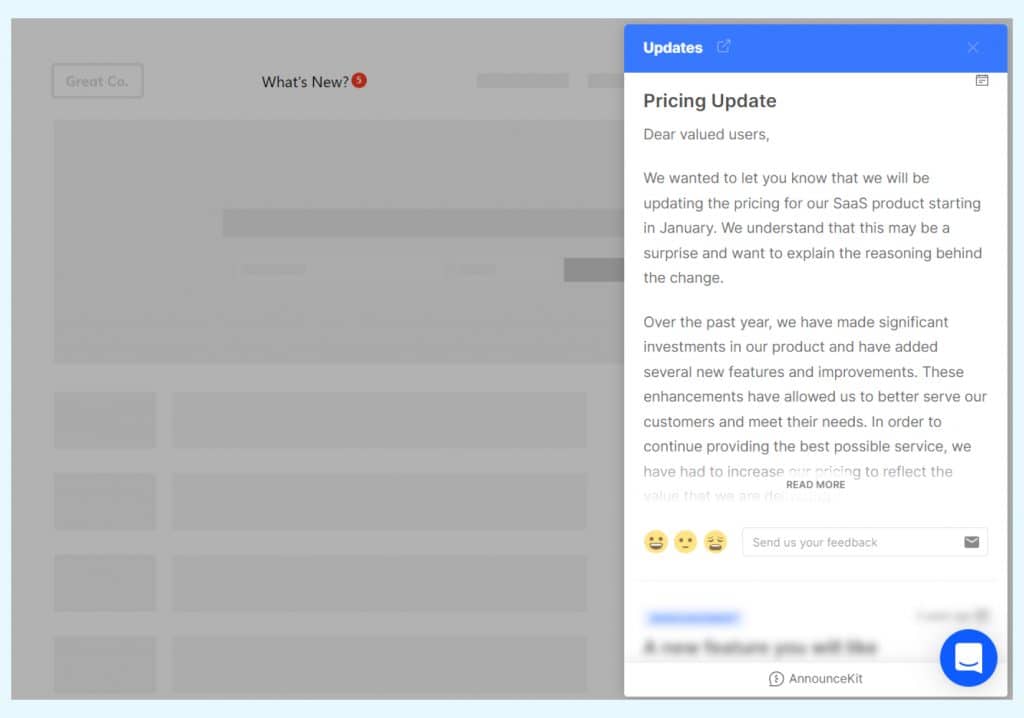
What was for dinner today? 👨🍳
The changing market pricing strategy was discussed at dinner today. This is a valuable tool for SaaS companies looking to maintain their current position in a changing market.
By knowing the market, setting pricing goals, and putting a well-thought-out plan into action, you can change your prices to meet the needs of your customers and reach your marketing goals.
I hope you enjoyed today’s service. 👨🍳
Adios! 👋

